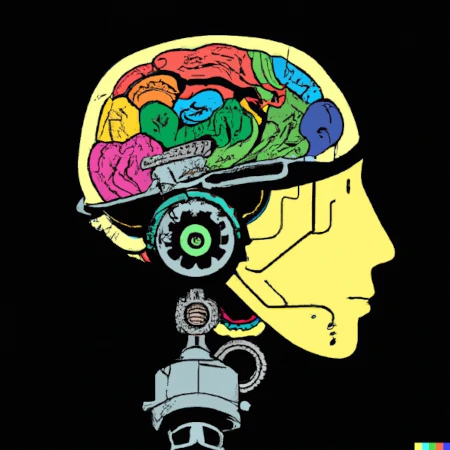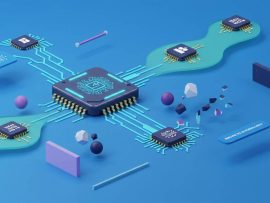
Artificial Intelligence (AI) has the potential to revolutionize various industries and improve the way we interact with technology. However, to maximize its benefits, it is crucial to prioritize human needs and preferences. This is where Human Centered AI comes into play. By placing humans at the forefront of AI design, we can create intelligent systems that not only cater to individual needs but also enhance user experience.
Contents
- 1 Importance and Benefits of Human Centered AI
- 2 The Relationship between Human-Centered AI and Human-Computer Interaction
- 3 How To Implement Human-Centered AI
- 4 Use Case of Human Centered AI
- 5 Pros of Human Centered AI
- 6 Cons of Human Centered AI
- 7 History of Human Centered AI
- 8 Future Outlook on Human Centered AI
- 9 FAQs
- 10 Conclusion
Importance and Benefits of Human Centered AI
Human-Centered AI offers numerous benefits to businesses. By focusing on human needs and preferences, AI algorithms can provide more accurate and ethical solutions. This enables business owners to better understand their customers and meet their individual needs.
Traditional AI algorithms often fail to collect, organize, and analyze data in a way that is useful for employees. Human Centered AI takes a human-first approach, recognizing humans as the primary users of products and services. This approach involves principles of user experience, research, and design, ensuring that biased data does not influence AI agents’ behavior or response. Moreover, Human-Centered AI enables humans to have more control over AI implementation.
The Relationship between Human-Centered AI and Human-Computer Interaction
Human-Computer Interaction (HCI) focuses on optimizing interactions between users and computers. With the rise of personal computing and advancements in technology like voice-based AI systems and the Internet of Things (IoT), HCI has become crucial in making man-machine interactions more human-like. HCI incorporates various disciplines such as cognitive engineering, linguistics, and neuroscience to create technology that is safe, comfortable, and easy to use.
How To Implement Human-Centered AI
Implementing human-centered AI involves four key areas of focus to ensure the technology is beneficial to users:
-
Understand the User Experience: Conduct thorough research to understand user needs and relevant data. This can be done through surveys, focus groups, and customer interviews. Use these insights to design AI applications.
-
Design AI Applications: Create solutions that help users accomplish their tasks. These solutions can be integrated into various platforms such as apps, websites, ads, or mobile devices.
-
Implement AI Solutions: Deploy these solutions across multiple touchpoints to provide easy access for users who need assistance or information.
-
Test & Measure Results: Evaluate the effectiveness of these solutions by monitoring user interactions, identifying usage patterns, and assessing overall user satisfaction.
Use Case of Human Centered AI
Human-centered AI finds applications in various fields, including:
Healthcare
Human-Centered AI brings efficiency to the healthcare industry, benefiting patients, doctors, and other healthcare professionals. By analyzing healthcare data, AI algorithms can identify insights, patterns, and even new drug applications. For instance, AI played a crucial role in the development of a drug for the treatment of COVID-19 by organizing clinical research trials and medical claims.
Human Resources
Human-centered AI can address biases in the hiring process by using job-related data to make fair and inclusive hiring decisions. This fosters diversity and inclusivity within organizations.
Auto Industry
AI has transformed the auto industry with the introduction of self-driving cars. These cars utilize AI and sensors to gather data about their environment, improving driving safety and efficiency.
Education
Human-Centered AI plays a critical role in online teaching and learning experiences. It helps educators build courses, assess student performance, and customize educational content to meet individual needs.
Cybersecurity
AI technologies are employed to detect network intrusion, fraud, hacks, user authentication, and spam filtration, ensuring proactive security.
Renewable Energy
Human-centered AI contributes to optimizing the use of renewable energy by managing decentralized grids, balancing electricity demands and supply, and reducing environmental impact.
Pros of Human Centered AI
Human-centered AI aims to improve user experience by considering factors such as personality, context, and expectations. It enhances human capabilities with intelligent technology, rather than replacing humans entirely. Some advantages of human-centered AI include:
Human Impact
Human-centered AI positively impacts health and well-being by monitoring physical activity, stress levels, and facilitating better decision-making. It also reduces work stress by automating repetitive tasks.
Improved Operational Efficiency
Human-centered AI streamlines business operations by predicting future events and increasing efficiency. For example, AI can forecast flu outbreaks and traffic jams based on search queries and traffic patterns.
Cons of Human Centered AI
While human-centered AI offers many advantages, it also poses risks that need to be addressed:
Misuse
There are concerns about the misuse of personal information by companies and the potential for security breaches by hackers. It is essential to prioritize privacy rights and ensure data protection.
Job Loss
The automation of tasks through AI may lead to significant job displacement. It is crucial to find a balance between human and machine capabilities to avoid widespread unemployment.
Human Impact
If AI algorithms are not designed with consideration for human nature, they can lead to poor user behavior and dependency. It is essential to encourage active learning and maintain a healthy balance between technology and human interaction.
History of Human Centered AI
AI has a rich history, with significant milestones that have shaped its development. From the 1950s, when the concept of AI emerged, to the advancements in expert systems and digital assistants in the late 20th century, AI has come a long way. Today, AI is present in various aspects of our lives, from self-driving cars to smart home appliances.
Future Outlook on Human Centered AI
Human-Centered AI holds immense potential for societal impact. As AI technology evolves, it has the ability to learn, adapt, and improve based on data. By leveraging human-centric principles, AI can enhance communication, improve accessibility, and create more personalized experiences. However, challenges remain, such as understanding natural language and addressing situations where human intervention is necessary.
FAQs
Q: What are the benefits of Human Centered AI?
A: Human Centered AI offers various benefits, including improved user experience, enhanced operational efficiency, positive human impact, and a focus on ethical considerations.
Q: How can Human Centered AI be implemented?
A: Implementing Human Centered AI involves understanding user needs, designing AI applications based on research insights, deploying solutions across multiple touchpoints, and continuously testing and measuring results.
Q: What are the potential risks of Human Centered AI?
A: Potential risks include misuse of personal information, job displacement, and a negative impact on human capabilities if users become too reliant on AI systems.
Conclusion
Human-centered AI prioritizes human needs, preferences, and experiences in the development of AI technologies. By ensuring that AI is designed to reflect human interaction patterns, we can create intelligent systems that enhance user experience and empower individuals. As AI continues to evolve, it is crucial to address challenges, maintain ethical considerations, and leverage the full potential of human-centered AI for a better future.
If you want to learn more about Human Intelligence vs AI, check out this interesting blog post.







